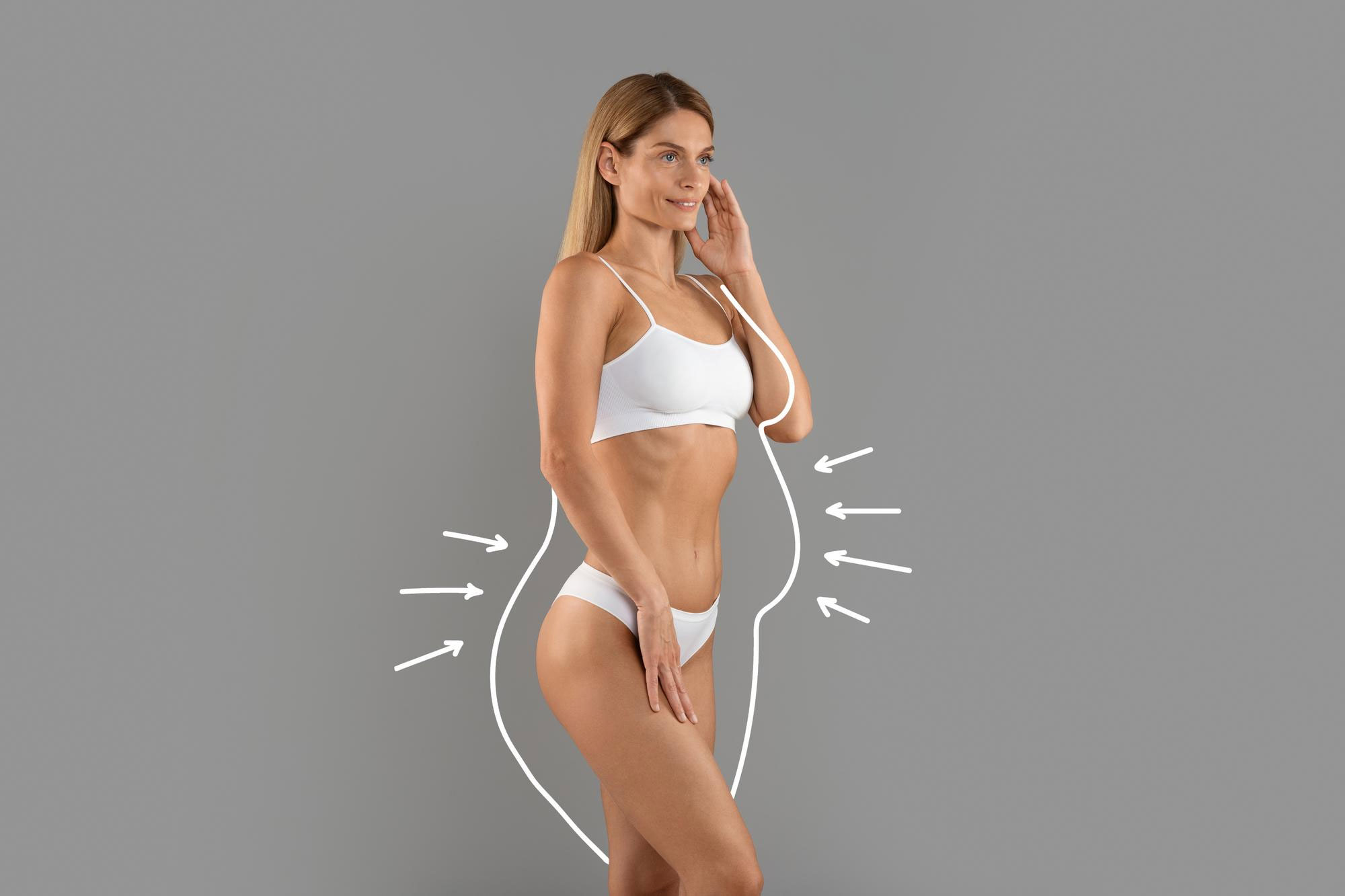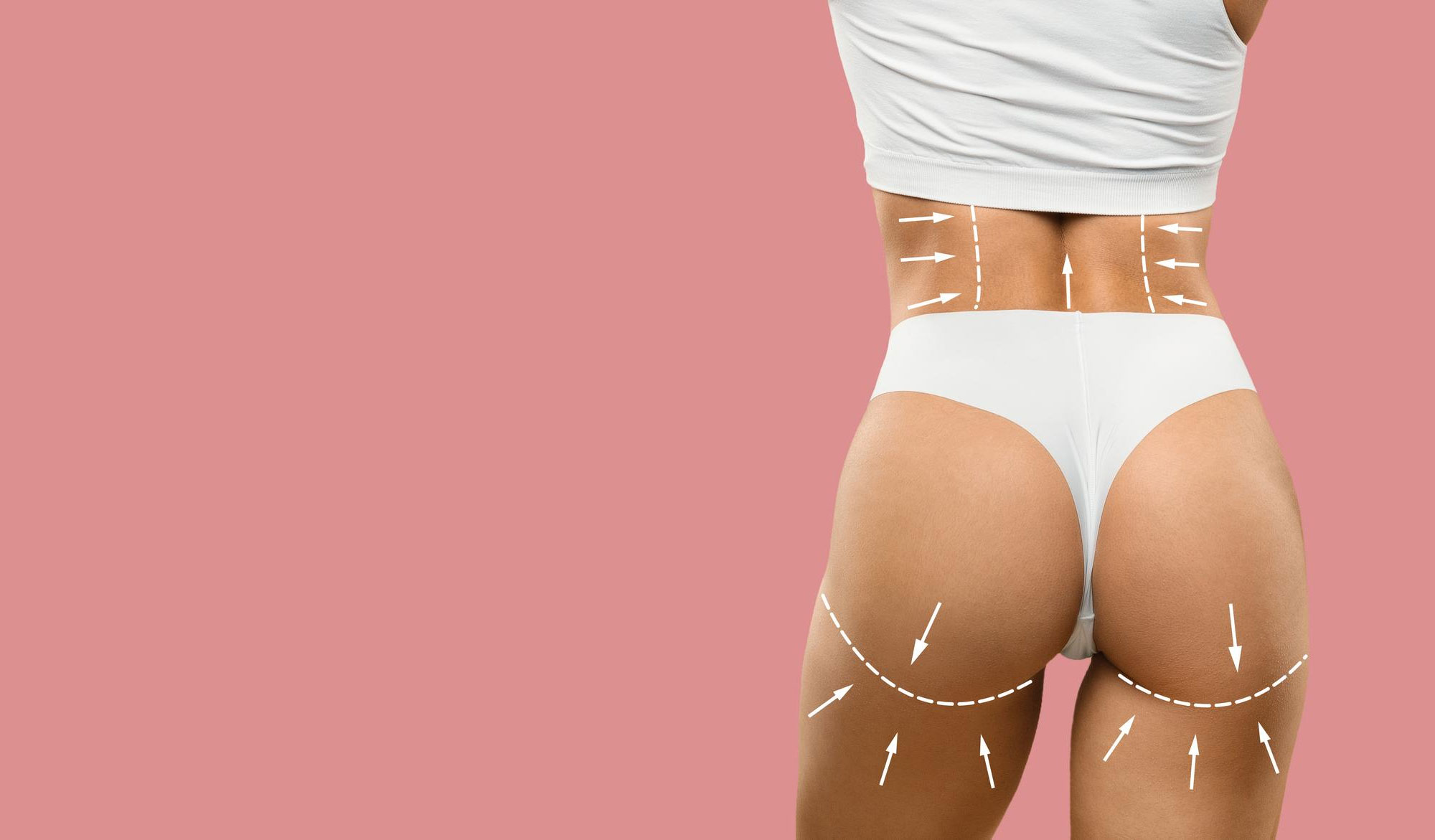What is breast reduction surgery and why is it performed?
Breast reduction surgery is a surgical procedure to relieve the physical discomfort and aesthetic concerns caused by large breasts. During the surgery, excess skin, fat tissue and breast tissue are removed. Thus, both the size of the breasts is reduced and their shape and erectness are regulated.
Physical Discomfort: Large breasts can put a serious strain on the shoulders, neck and back. In the long term, this can lead to poor posture and even spinal problems. Imagine having to carry a heavy backpack on a daily basis: Carrying this bag all the time can cause muscle and joint pain over time. Large breasts have a similar effect.
Skin Problems: Constant moisture and friction in the fold area under the breast can cause skin irritation and fungal infections. This is especially evident in hot weather.
Psychological and Social Effects: For people who have difficulty choosing clothes because of the size of their breasts, who experience pain or shortness of breath during sports, who are uncomfortable with their physical appearance in public, this surgery can increase self-confidence. Another plus is that the person becomes more active in their daily life and feels more comfortable.
Breast reduction surgery aims to alleviate such problems. After the surgery, the person can move more freely and comfortably; they can choose the kind of clothes they want and posture disorders that may lead to hunchbacks are improved.
Who is a Suitable Candidate for Breast Reduction Surgery?
Not every person with a large breast structure necessarily needs surgery. Some criteria are considered before deciding on surgery:
Neck, Back and Shoulder Pain: If you have been suffering from low back, neck or back pain for a long time due to breast size and these pains cannot be controlled with methods such as physical therapy, exercise or medication, this surgery may become a serious option.
Skin Irritation and Sores: If there are recurrent skin problems such as chronic diaper rash, fungus or sores in the under-breast area, these problems are largely eliminated with breast reduction.
Restriction in Daily Life: There are many people who have difficulty in doing sports, running, bending and even changing position during sleep due to large breasts; there are many people who have comfort problems while using public transportation. Disruption of daily activities is one of the most important indicators of breast reduction surgery.
Completion of the Development Period: It is generally expected that the development of breast tissue is complete. During puberty or when the breasts are still in the growth phase, surgery is not recommended without medical supervision and necessary evaluations.
General Health Status: The surgery is performed under general anesthesia. Therefore, conditions such as diabetes, high blood pressure and heart disease are expected to be under control. In addition, since active smoking negatively affects wound healing, it is recommended to quit smoking or at least significantly reduce it.
People who meet these criteria and do not have any health problems that may prevent surgery are largely suitable for surgery. Of course, it would be right to make the final decision after a detailed examination and evaluation of the needs of the person.
How is Breast Reduction Performed?
Breast reduction surgery is also known as "reduction mammaplasty" in medicine. Although it sounds complicated, its basic principle is to remove excess breast tissue to create a smaller, lighter and shaped breast structure. The surgeon takes into account many factors such as the size and shape of the breast, skin elasticity and the general health of the patient before the operation.
Anesthesia First, general anesthesia is applied. This ensures that the person does not feel pain during the operation and sleeps comfortably.
Making the Incisions: Different incisions may be preferred to reach the breast tissue. Some of the most commonly used techniques are the "inverted T" (the "Anchor" technique with ankara analogy) and "lollipop" (vertical scar) techniques. Which technique to choose is closely related to breast size and the degree of sagging.
Inverted T (Anchor) Technique: It involves a circular incision around the areola (the brown area surrounding the nipple), then a vertical incision under the breast and finally a horizontal incision in the inframammary fold. It is especially preferred for very large and saggy breasts.
Lollipop Technique (Vertical Scar): There is a ring around the areola and a vertical incision extending from there under the breast. It is applied in patients who need moderate reduction and whose skin is in relatively better condition.
Liposuction Assisted Method: If there is not excessive sagging, for example, if the tissue of the breasts consists mostly of fat, a more limited intervention can be performed with liposuction with fewer incisions. However, liposuction alone may be insufficient to remove large volumes of tissue.
Tissue Removal and Breast Contouring: Excess skin, fat and breast tissue are removed through incisions. The shape of the breast is also reorganized during this procedure. It is not enough just to reduce the breast; a balanced distribution of breast tissue must also be ensured.
Positioning of the Nipple: The nipple and areola are usually moved to the upper level without disconnecting from the tissues. Thus, blood circulation and nerve connections are preserved. In exceptional cases, in patients with very large breasts, the nipple can be carried as a free graft, which may result in a decrease or loss of sensitivity and breastfeeding function.
Closure and Bandage: After the excess tissues are removed and the new breast shape is given, the incisions are closed. At the end of the procedure, the area is dressed, drains are placed if necessary and the patient is wrapped in a support bra or elastic bandage.
The duration of the surgery varies between 2 and 5 hours on average. This time may vary depending on the size of the breast, the technique to be applied and additional procedures that may occur during surgery.
What is the Postoperative Recovery Process?
Hospitalization Period: After breast reduction surgery, the patient usually stays in the hospital for 1 night. This period may be shorter or longer depending on the general health condition of the person, the extent of the surgery and the effect of anesthesia.
Pain and discomfort: Pain, pressure or pulling sensation in the chest area is normal for the first few days. Painkillers prescribed by the doctor will largely control this problem. It is possible to think of it as a mild muscle stiffness, which is uncomfortable at first but diminishes over time.
Returning to Daily Activities: In the first week, it is important to avoid work that requires effort. Light walks around the house can be done, but running, heavy lifting, activities that put too much strain on the upper body can negatively affect the surgical scars. Most people can return to a desk job or non-heavy daily work after 2-3 weeks. It is usually safer to wait 4-6 weeks to return to sports.
Use of a Support Bra: Wearing a special support bra or sports bra after surgery allows the breasts to maintain their new shape and reduce swelling. This bra should be worn regularly for at least a few weeks.
Drains and stitches: In some cases, small tubes called drains are placed to remove the fluid accumulated after surgery. These drains are usually removed after 1-2 days. Stitches are usually made of self-dissolving materials or removed by the doctor after a certain period of time.
Scars Surgical scars may be more visible in the first months. However, over time, these scars fade to a great extent as the skin color changes and the wound heals. Unfortunately, there is no surgery that leaves no scars; however, the position and color of these scars are reduced to a level that does not disturb most patients.
What are the Possible Risks of Breast Reduction Surgery?
As with any surgical intervention, breast reduction surgery may have some risks and side effects:
Infection and bleeding: The risk of infection at the operation site increases, especially if the rules of care and cleanliness are not followed. Bleeding or hematoma (blood accumulation) are also rare complications that require serious follow-up.
Wound Healing Problems: Factors such as smoking and diabetes can slow wound healing. Wound separation or delayed healing may sometimes require additional dressings and treatments.
Changes in Nipple Sensation: Since the nerves may be affected during surgery, you may experience numbness, hypersensitivity or tingling in the nipple. These changes are usually temporary but can also be permanent.
Fat Necrosis and Hardness: After surgery, fat necrosis may occur in the breast, giving a feeling of hardness. This is caused by insufficient blood supply to the fatty tissue and is usually felt as small nodules. Most of the time it is not a serious problem, but when a significant mass develops, it may require follow-up with ultrasound or mammography.
Decreased Breastfeeding Capacity: Removal of breast tissue can cause damage to some of the milk ducts. Partial reductions in breastfeeding capacity may occur, especially if extensive reduction has been performed.
Most of these risks are minimized by the correct technique applied by an experienced surgeon and by careful attention to postoperative care. In addition, the risk of complications is lower in individuals who are in good general health, do not smoke and follow all doctor's recommendations.
What are the Benefits of Breast Reduction Surgery?
Breast reduction is not only an intervention for physical appearance but also a procedure that directly improves one's quality of life:
Physical Relief: There are many positive changes such as relief of shoulder and back pain, improved posture, easier breathing, and relaxed participation in sports activities. Especially for those who have carried the burden of large breasts for many years, this difference is similar to the feeling of a lightened bag.
Increased Self-Confidence: It is an important psychological transformation to be free in clothing choices, to feel more comfortable in public, to be free from anxiety in environments such as the beach or gym. Visibility anxiety or embarrassment caused by large breasts decreases.
Active Life: The motivation to exercise may increase as the person is now free from a weight that restricts mobility. Increased comfort in sports such as walking, jogging and swimming makes it easier to adopt a healthier lifestyle.
A More Vertical and Vigorous Breast Structure: As breast sagging is corrected, the person gets a more youthful and upright appearance. This can create a feeling of rejuvenation both physically and mentally.
What Should Be Considered During This Process?
Preoperative Examination and Evaluation: The anatomical structure of the person, the density of the breast tissue, skin quality, chronic diseases and medication use, if any, are decisive in planning the surgery. In addition, imaging methods such as mammography or ultrasound are used if necessary to check whether there is a mass or other abnormality in the breast.
Communication with the doctor: Before deciding on surgery, expectations, the technique to be used in the surgery, possible risks and the postoperative process should be discussed in detail with the surgeon. Factors such as how much tissue will be removed and how high the nipple will be moved are clarified through these discussions.
Weight Status and Diet: Overweight people have more fat tissue in their body and this may affect the success rate of the surgery. Losing some weight before the operation and getting closer to the ideal weight can reduce both anesthesia risks and surgical complications.
Smoking: Smoking adversely affects blood circulation and makes wound healing difficult. Therefore, quitting or significantly reducing smoking at least a few weeks before surgery is of great importance for wound healing.
Regular Checkups: Regular medical check-ups in the postoperative period make it easier to recognize and treat possible complications early. Separate follow-up plans are created for the first days, first weeks and first months.
How Permanent is the Recovery Process and Results?
The healing process is usually largely completed within 6-8 weeks. Edema and mild bruising may occur in the first period, but these regress over time and return to normal skin color. In about 3-6 months, it is observed that the breasts begin to take their final shape.
Long Term Permanence: As with major changes in the body, the permanence of the result in breast reduction depends on personal habits. Weight gain and loss, pregnancy and breastfeeding can affect breast tissue. It is normal to observe some sagging due to gravity and decreased tissue elasticity, especially in advanced ages, but it is never possible to return to the old volume.
Regular Exercise and Nutrition: Maintaining a healthy lifestyle and maintaining body weight helps to maintain the surgical result for longer. Exercising makes the muscles around the breast stronger, which maintains a lifted and perky appearance.
Psychological Relief: After surgery, many people feel a marked increase in self-confidence due to improvements in both appearance and mobility. There are likely to be positive effects on social life, work life and even personal relationships.
How to Care for Scars and Correct Aesthetic Appearance after Breast Reduction?
Care of Scars: In the first period, scars may be pinkish and prominent. In this process, it may be useful to use products such as scar cream, silicone layer or gel in accordance with the doctor's recommendation. These products help the scar tissue to heal more evenly.
Sun Protection: Surgical scars should not be exposed to sunlight. The sun can cause the scar to darken and take longer to heal. It is therefore important to use sunscreens with high protective factors or appropriate clothing.
Massage and Physiotherapy: Some surgeons may recommend light touch massages after a certain recovery period. These massages may contribute to the reduction of edema and faster recovery of tissues. However, it is not valid for every patient; therefore, the physician's approval must be obtained.
Possibility of Revision: If needed, a revision procedure can be planned to reduce the appearance of surgical scars or correct minor deformities. This second touch is usually performed at least 6 months after the first surgery. However, this is not necessary for every patient.






























